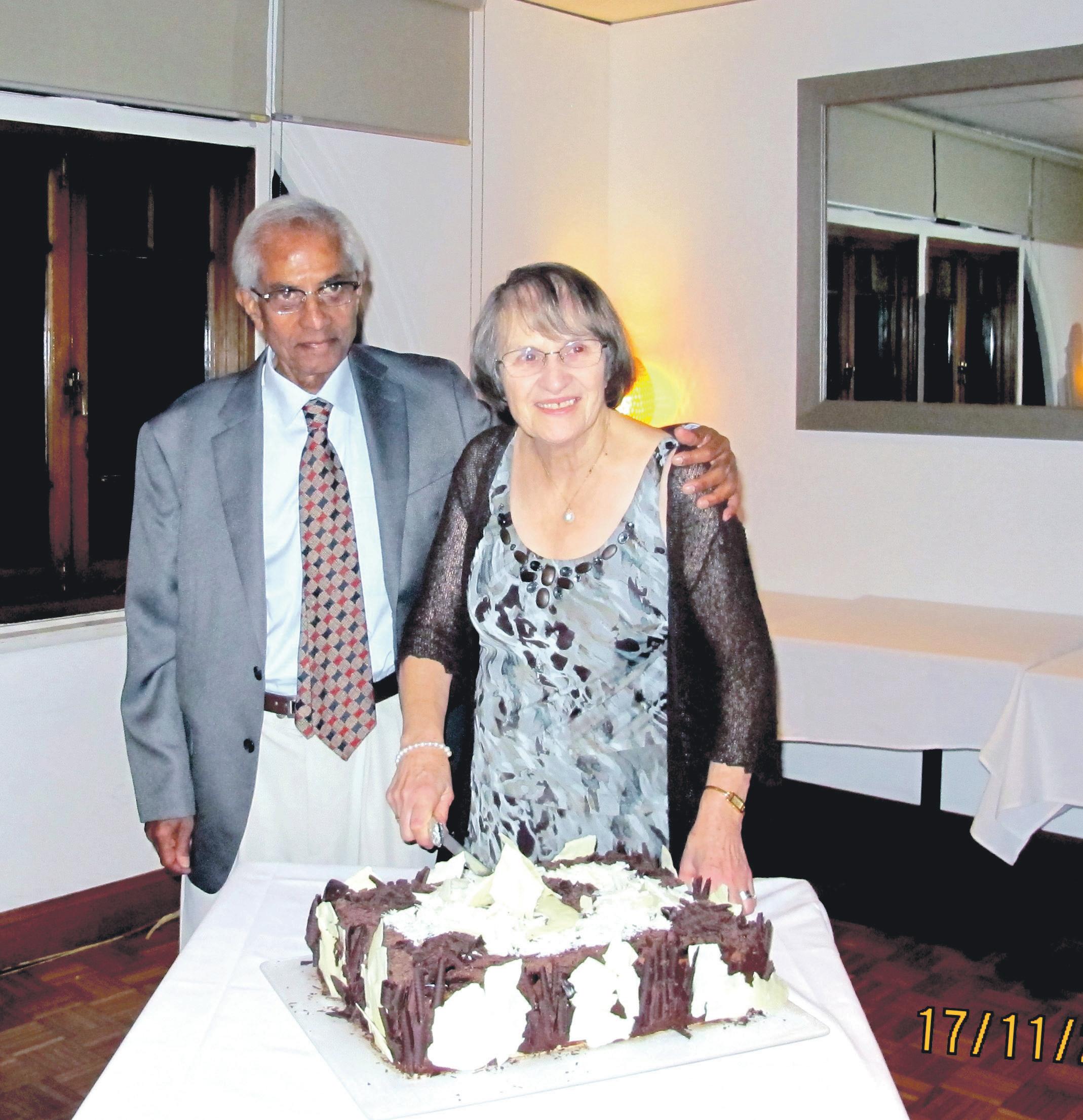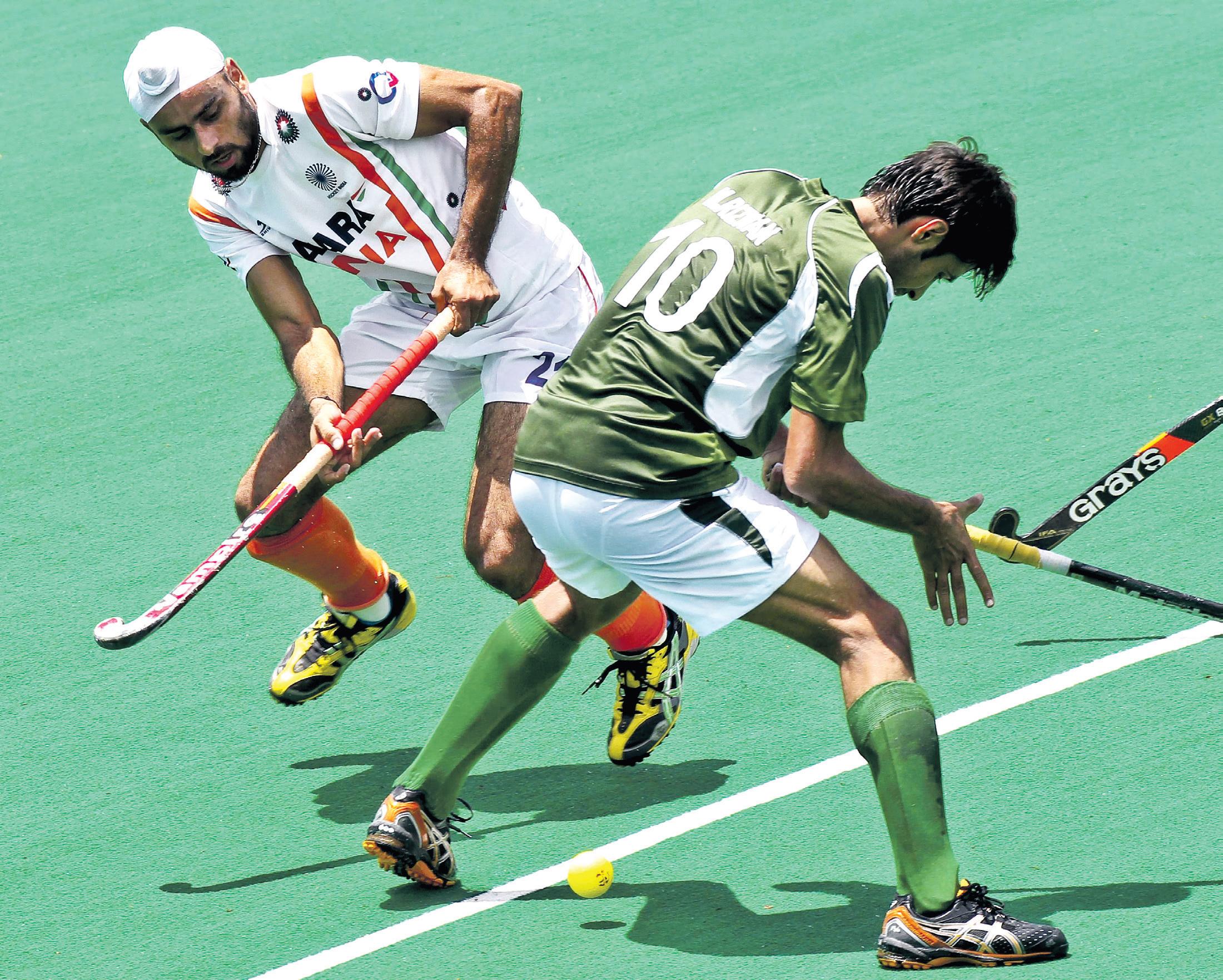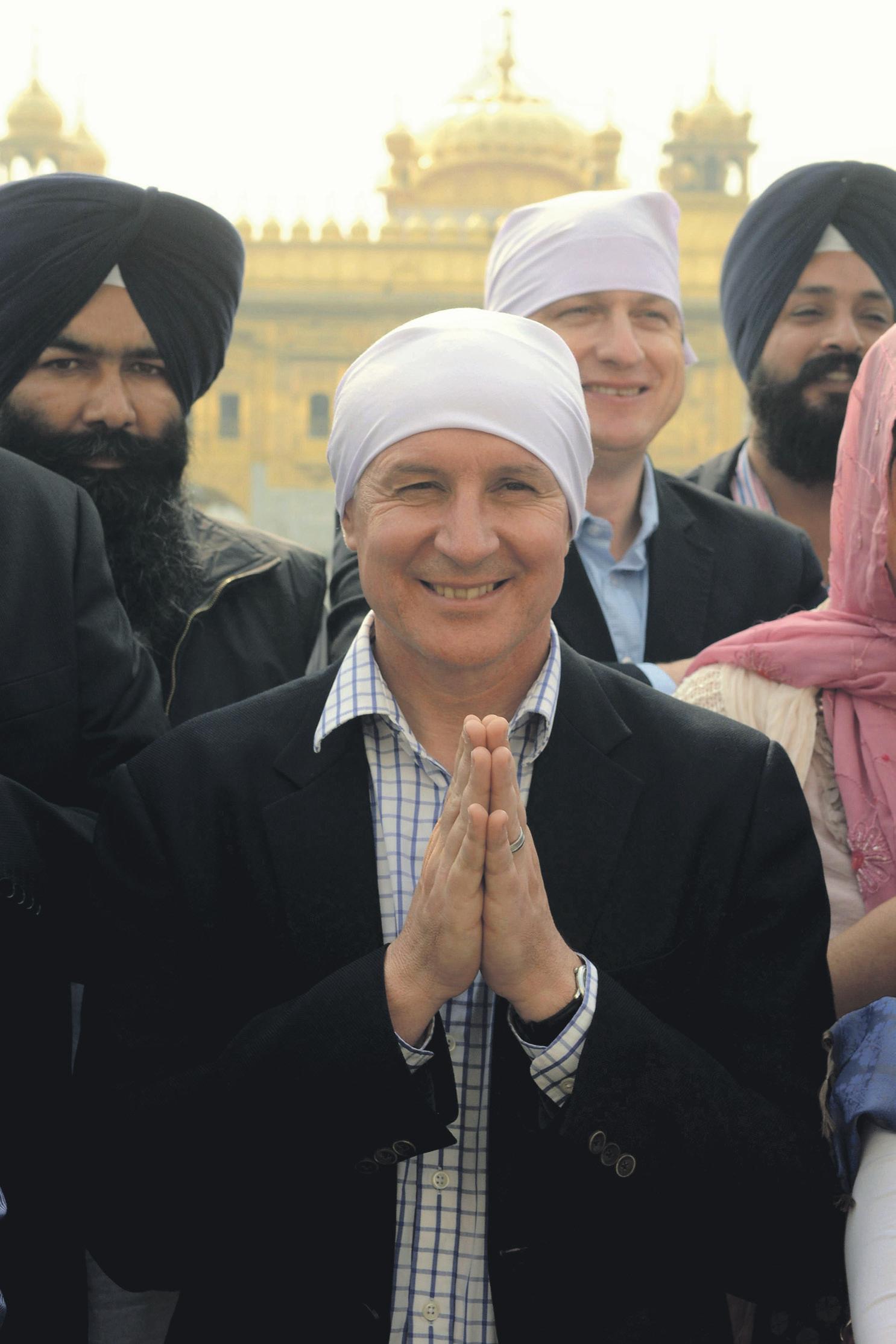
11 minute read
People Parties Places
from 2012-12 Sydney (1)
by Indian Link






Gujral: Gentleman politician who sought peace with neighbours
Inder Kumar Gujral was India’s prime minister for a brief 11 months in 199798. But the mild-mannered, soft-spoken politician, whose personality flew against the political archetype, will be remembered primarily for his keen interest in protecting and promoting India’s external interests and the eponymous Gujral Doctrine - his mantra for India’s neighbourhood policy when he was external affairs minister twice in a decade.
The quintessential Congress member who later left the party to join the Janata Dal after differences with former prime minister Indira Gandhi over her autocratic ways, Gujral died this month at the age of 93, as quietly and gracefully as he had exited the political stage two decades ago.
In a way reflective of the man, who came to Delhi from Pakistan in the traumatic post-partition period, the Gujral Doctrine advocated magnanimity towards small neighbours in the interest of regional peace and progress.
“The logic behind the Gujral Doctrine was that since we had to face two hostile neighbours in the north and the west, we had to be at ‘total peace’ with all other immediate neighbours in order to contain Pakistan’s and China’s influence in the region,” said Gujral in his autobiography
Matters of Discretion
Derided as a weak and conciliatory policy at the time when reciprocity was still the ruling mantra at South Block, the principle was nevertheless carried forward by successive governments. It helped change mindsets and improved India’s ties with its neighbours through the years.

Gujral said: “When I finally demitted office (as prime minister) in March 1998, I had the satisfaction that India’s relations with all its neighbours were not only very healthy but also, to a large extent, the elements of mistrust and suspicion had evaporated.”
Gujral headed the external affairs ministry through two crucial periods (198990 and 1996-97) under first prime minister V.P Singh and then H.D. Deve Gowda. He helped steer India through the crises of the early 1990s, when India was making the difficult adjustment to the end of the Soviet Union, and the oil shock administered by Iraq’s invasion of Kuwait (both important oil suppliers to India).
The Comprehensive Test Ban Treaty (CTBT) was being negotiated during his second term and his period as prime minister. Despite strong international pressure, India refused to sign the unequal treaty as banning future tests would have closed India’s nuclear option.
The invasion of Kuwait not only disrupted India’s oil supplies but, more importantly, left almost 200,000 Indians stranded in the region. Gujral flew to Moscow, Washington and Baghdad and obtained assurances on oil supplies from Moscow. In Baghdad he was greeted by Iraqi president Saddam Hussain with a hug. Gujral was pilloried by the Western and sections of the Indian media for that but the visit ensured that the Indians stranded in Baghdad and Kuwait were allowed to be evacuated when “others were being held as guests”.
Gujral revealed in his autobiography that in the general elections after the first NDA government led by Atal Bihari Vajpayee fell by just one vote in parliament, Congress president Sonia Gandhi offered him a Congress nomination for the polls.
“In case, I did not wish to contest, she told me that she would back my entry to the Rajya Sabha. However, I decided that having held the position of the prime minister of India, I must refrain from switching parties and call it a day gracefully.”
Inder Gujral was born Dec 4, 1919 in the town of Jhelum on the banks of the river of the same name, now in Pakistan. His parents were freedom fighters and members of the Congress but Gujral was drawn to the students’ wing of the Communist Party of India.
He was sent to Lahore Borastal Jail for organising a demonstration.
Gujral came to Delhi after the 1947 partition and got involved in local politics, becoming closer to the Congress. In 1964 he was elected to the Rajya Sabha with Indira Gandhi’s backing. Three years later, in 1967, she made him minister of state for parliamentary affairs and communications.
When Emergency was imposed in 1975, he was the information and broadcasting minister. But he soon fell foul of Sanjay Gandhi and was relegated to the planning ministry. When his Rajya Sabha term ended a year later, Indira Gandhi sent him to Moscow as India’s ambassador (1976-80) “since he refused to bow down to the de facto powers (read Sanjay Gandhi)”.
He left the Congress after his stint in Moscow, later joining the anti-Congress Janata Dal. He was elected to the Lok Sabha for the first time in 1989 from Jalandhar in Punjab, re-elected in 1998 when he was interim prime minister but he decided not to contest the 1999 elections, choosing to retire from electoral politics.
He spent his last decade writing and speaking largely on foreign policy issues and was much sought after in intellectual and academic circles.
China’s naval modernisation a ‘major, major concern’: Indian navy chief
Against the backdrop of Beijing’s assertiveness in South China Sea, India’s navy chief in a tough message early December said the rapid modernisation of the Chinese Navy is a “major, major cause for concern” and declared support for an Indian firm’s oil interest in the contested waters.
Navy chief Admiral D.K. Joshi robustly defended freedom of navigation and underlined that the force was ready to protect the country’s assets in the maritime domain.
The navy chief’s remarks came on a day when National Security Adviser Shivshankar Menon is in Beijing to hold talks with China’s influential state councillor Dai Bingguo, Beijing’s chief pointsperson for boundary talks.
“The modernisation (of Chinese Navy) is truly impressive... It is actually a major, major cause of concern for us, which we continuously evaluate and work out our options and our strategies,” Admiral Joshi told reporters at the Navy Day press conference.
With an assertive China flexing its muscles in South China Sea, he also stressed that the Indian Navy will protect ONGC Videsh’s investments in oil blocks off the coast of Vietnam.
“Our primary concern is freedom of navigation. The ONGC also has blocks in the South China Sea. The navy is here to protect our interests in the maritime domain,” he said.
“The South China Sea is a complex issue. We are not a direct party. No territorial interest is there for us,” Joshi told reporters here to queries about recent Chinese activities in the South China Sea.
“In certain sectors ONGC Videsh has certain interests. It has energy exploration blocks, three in number, and since it is an area of Indian interest the Indian Navy, should there be a need, would stand by,” he said.
“Not that we expect to be in those waters very, very frequently, but when the requirement is there for situations where the country’s interests are involved, for example ONGC Videsh, we will be required to go there and we are prepared for that.
“Are we holding exercises for that nature? The short answer is ‘yes’.”
Joshi also underlined that disputes over freedom of navigation and territory within the South China Sea must be resolved within the ambit of international treaties. “Not only us, but everyone is of the view that they have to be resolved by the parties concerned, aligned with the international regime, which is outlined in UNCLOS (United Nations Convention on the Law of the Sea), that is our first requirement,” he said.
China’s massive military build-up in recent years has evoked much concern among strategic circles in India.
“The accretion of trans-border military capability by China is a matter of legitimate concern for India,” C. Uday Bhaskar, a strategic expert at the Society for Policy Studies, a think tank, told IANS.
Bhaskar stressed that while China does not pose an immediate threat to India’s interests, the Chinese modernisation needs to be monitored carefully.
China’s military budget has recorded a major upswing, and has officially touched $106 billion in 2012.
With an evolving strategic environment on mind, Joshi focused on scaling up the Indian Navy’s capabilities and spurring the modernisation of the naval infrastructure to meet a host of challenges.
“Modernisation and enhancement of the Navy’s capabilities is an ongoing process, to meet emerging maritime challenges/threats. These include aircraft carriers, stealth frigates, destroyers, corvettes, amphibious ships and submarines.”
“The Indian Navy would also be inducting state-of-the-art aircraft and helicopters to augment our surveillance and integral aviation capabilities,” he said.
More glamour than business at fashion week
From Indian names including Zeenat Aman, Bipasha Basu, Genelia D’Souza, Shazahn Padamsee to international fashion icons like Paris Hilton, Miss Paraguay Leryn Franco and Nicole Huber, the second edition of India Resort Fashion Week (IRFW) was more about glamour than business.
With as many as 30 shows, the four-day festival that was divided into three areas‘The Fashion Show’, ‘The Fashion Village’ and ‘The Music Festival’, concluded in Goa recently, with a energetic performance by Paris, who visited the country for the second time.
The first edition witnessed 15 designers showcasing their talent, but the second edition had more names.
Some of the established names part of the fashion fest were Narendra Kumar, Neeta Lulla, Arjun and Anjalee Kapoor, Pria Kataaria Puri, James Ferreira, Falguni and Shane Peacock, Rocky S and Babita Malkani.
When asked why there were lesser established names this year, Mumbai-based designer Narendra Kumar said that people in India were little exposed to trends in resort wear.
“I think I understand the value of the resort week, other people probably do not understand or cannot make clothes that are different from one collection to other. It’s important that I participated and am sure there will be more designers who will enjoy the mix of fun, fashion and music together in the coming days,” he said.
“I think the resort trend is relevant to India. It is one kind of clothing that is perfect across India. It is probably the best thing one could do,” Kumar added.
Unlike last season, this fashion week was organised in open air, giving more space for designers to showcase their creativity.
While space was provided, there were hardly any collections displayed for the buyers. Almost all the stalls were empty, and there was much leisure and chatting.
Shane and Flaguni Peacock, who were the finale designers for the fashion week, said that organising a resort week is surely going to help the Indian fashion world.
“Resort week is definitely a good thing to do for the Indian market and it was our gut feeling that made us say yes to this event,” said the designer duo, who rarely participate in Indian fashion weeks because of their international commitments.
Amit Patel from E-Sense entertainment, who brought some of the international names, including Paris, said that buyers from around the globe had flown in to see the collection.
“Indian fashion is much more appreciated outside India and with IRFW we strive to create a platform for all aspiring designers to showcase their talent globally. It’s a perfect blend of music and fashion. Also there has been a lot of business as buyers from around the globe have flown in to watch the collection,” said Patel. Visitors at the IRFW seemed more drawn to the music than the fashion.
The four-day event had a robust line-up of Indian and international disc jockeys (DJs).
From Indian DJs like Vijay Chawla, Anish Sood and Clement D’Souza to international names like Sidney Samson, Dimitri Vegas, Like Mike and of course Paris Hilton, the music definitely attracted one and all.
Pakistani daily rues delay in opening trade with India
The outreach to India could be the centrepiece of the Pakistani government’s foreign policy credentials going into the election, a leading daily said recently, lamenting that the process of trade liberalisation with New Delhi has been “gummed up because of parochial interests”.
An editorial in the Dawn said trade with India is supposed to be the game-changer in relations between the two countries.
“Better ties with India, including flinging open the doors to mutually beneficial trade, is supposed to have become a bedrock principle among mainstream politicians. But few things here follow a smooth script,” it said while referring to Pakistan missing a self-imposed deadline to allow all tradable items to cross the land border with India.
Agriculturalists and their supporters in cabinet are reluctant to endorse the government’s own plan ahead of an election, it said.
“The thinking is typically protectionist, and bereft of a full understanding of what Pakistan would have to do after cabinet endorsement of trade liberalisation with India.
“...given the quality of debate in the cabinet and the electoral considerations of politicians becoming paramount with an election on the horizon, rational argument is an unfortunate casualty in decisionmaking,” the daily added.
Equally worrying, the editorial said, is how easily the decision-making process can be manipulated by vested interests, even on the civilian side.
“The outreach to India could be the centrepiece of this government’s foreign policy credentials going into the election; the manifold benefits of trade, including the positive spillover for other security aspects of the fraught Pakistan-India relationship, are undeniable; and with an economy struggling to return to a high growth path, every little bit can help - and yet the process of trade liberalisation with India has been gummed up because of parochial interests.”

It went on to say that after over six decades of a “dispiriting” relationship with India, there are few reasons or excuses that have not been proffered to thwart better ties.
“But at least this much has become clear: without bold and courageous political leadership, meaningful improvements in Pakistan-India relations will never materialise,” it said.
“The issues and disputes between Pakistan and India are very real. The hawks on the Indian side are equally real, as is the growing suspicion of Pakistan across the Indian elite in government, civil society and the media. But none of that is reason to stop trying. Trade is a win-win situation for both Pakistan and India; the federal cabinet needs to better educated in the matter,” the daily added.
Tibet owes its religion to India: Tibetan PM-in-exile Attributing the success of the Tibetan democratic experiment in exile to Indian values and traditions, Tibetan Prime Minister-in-exile Lobsang Sangay recently said that the country “owed its religion to India”.
“Tibet owed its religion to India and that it is owing to the proximity to India physically and spiritually that the Tibetan struggle has conformed to the tenets of ahimsa (non-violence), dialogue and reconciliation,” said Sangay, who took over as political successor to the Dalai Lama.
The Tibetan leader was speaking at the ‘Sixth Dr. K.R. Narayanan Memorial Lecture’ on the theme - ‘Democracy in Exile: The Case of Tibet’ at the Jamia Millia Islamia in New Delhi.
Harvard-educated Sangay, who was elected head of the Central Tibetan Administration, said that the Tibetan democracy, above all, owed itself to the vision of His Holiness the Dalai Lama.
On the importance of Tibet’s water and ecology, not just for India but for the environment sustainability of the world, Sangay said that continued destruction of natural resources, mindless expansion in the name of development and extensive militarisation will only add to global climate worries.
The Dalai Lama has lived in India since fleeing his homeland in 1959. The Tibetan exile administration is based in Dharamsala in Himachal Pradesh.
Some 140,000 Tibetans now live in exile, over 100,000 of them in India. Over six million Tibetans live in what is now known as the Tibet Autonomous Region in China. IANS
BY PETRA O’NEILL
In 1796, explorers Bass and Flinders spent three days mapping Port Hacking in Tom Thumb II, a small rowboat. On three successive Sundays, I enjoyed glorious sunny days as I explored the area on foot. At 16,000 hectares, Sydney’s Royal National Park is vast, and I barely made an imprint with over 150 kilometres of walking tracks!
The world’s second oldest national park opened in 1879, and beaten only by Yellowstone in the United States, the Park is perfect for bushwalking, cycling, kayaking, surfing, picnicking and whale watching. During spring you’ll see wildflowers in full bloom, with pink, red, yellow and purple colours everywhere, and over 700 plant species including angophoras, grevilleas and banksias. The scenery is varied and spectacular with waterfalls, coastal cliffs and beautiful beaches.
After catching Australia’s oldest commuter ferry to Bundeena, on the southern shore of Port Hacking, Ian Wells our guide from Royal Coast Walks, led our small group along Jibbon Beach. The annual migration of humpback whales occurs until November, and we looked for the tell-tale sign of a blow of water in the air. We viewed ancient Dharawal









